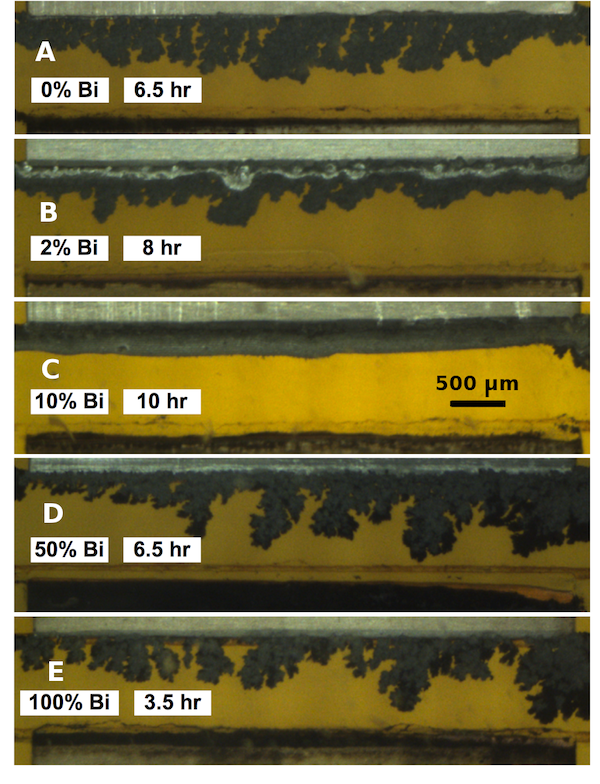Just published a paper called “An in situ synchrotron study of zinc anode planarization by a bismuth additive.” It’s a mechanistic study to explain a result we discovered in the early days of the CUNY Energy Institute. I was looking for an additive to kill dendrite formation in zinc, working with Dan Steingart and Abhinav Gaikwad, who was a graduate student at the time. Turns out a little bit of bismuth can keep zinc layers quite flat when electroplated from a flowing electrolyte. The middle image below shows it clearly:
The percentages are % of the bismuth saturation limit, which is very low. 10% is 3 ppm, an almost undetectable amount, and it has an enormous impact. This result could be used to increase the energy density of zinc batteries, by keeping the zinc layer compact. When naming the paper I called it “planarization” instead of “leveling” because the mechanism is different than that of a leveler in traditional electroplating.

